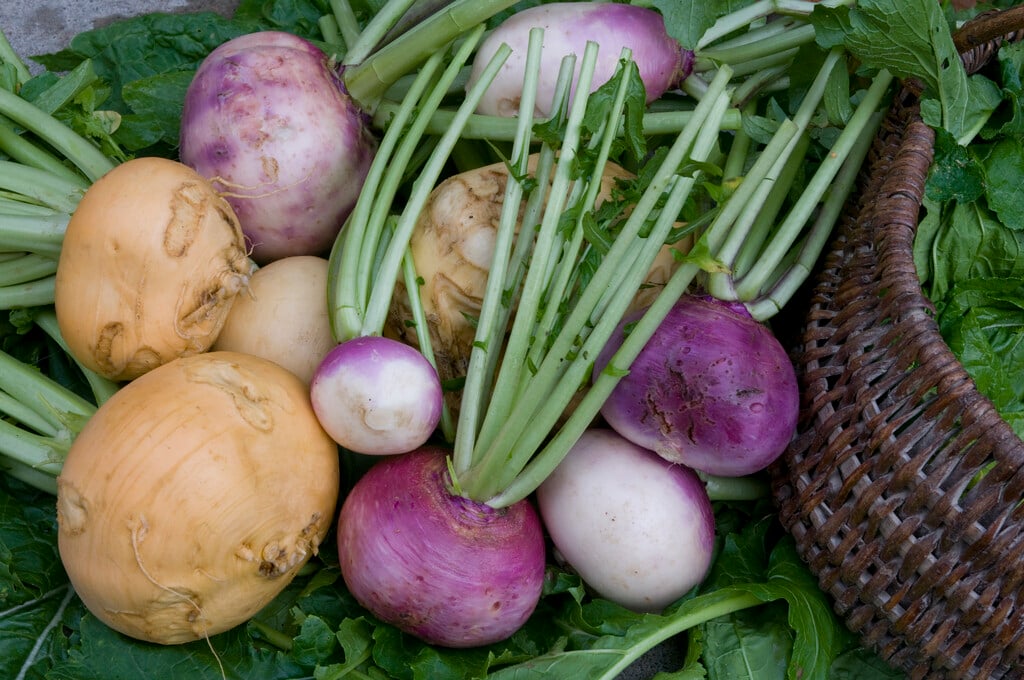Brassica rapa
turnip
This is the mustard plant from which many types of vegetable have been bred - from turnips to 'oriental leaves' of heading, bunching and flowering varieties, but importantly, the oilseed plants normally seen in fields. It looks very similar to other wild brassicas, with evergreen leaves and yellow flowers. It is extremely variable but the lower leaves are larger, on stalks, often with several leaflets and a wavy or toothed edge, whilst the upper leaves are small, stalkless and narrow. The flowers become long green pods with a long pointed tip, containing dark brown/black seeds. All parts are edible when young
Size
Ultimate height
1–1.5 metresTime to ultimate height
1–2 yearsUltimate spread
0.5–1 metresGrowing conditions
Moisture
Moist but well–drainedpH
Alkaline, NeutralColour & scent
| Stem | Flower | Foliage | Fruit | |
| Spring | Green | |||
|---|---|---|---|---|
| Summer | Yellow | Green | ||
| Autumn | Yellow | Green | Green | |
| Winter | Green |
Position
- Full sun
Aspect
East–facing or North–facing or South–facing or West–facing
Exposure
Exposed or Sheltered Hardiness
H5Botanical details
- Family
- Brassicaceae
- Native to GB / Ireland
- Yes
- Foliage
- Evergreen
- Habit
- Bushy, Columnar upright
- Genus
Brassicas can be annual, biennial or perennial plants, most are upright with alternate, often glaucous leaves, long taproots and clusters of cross-shaped, yellow or white flowers. The genus includes a number of species bred to produce food crops, such as cabbages, turnips, mustards and oilseed rape, as well as others grown for their ornamental value
- Name status
Correct
How to grow
Cultivation
Grow outdoors in fertile but firm, soil that isn't too acidic. This is the wild type of many of our vegetables. It is attractive to butterflies and pollen beetles, but take care as it can harbour pests and diseases which on your food crops will be unwelcome.
Propagation
Propagate by seed
Suggested planting locations and garden types
- Wildlife gardens
- Cottage and informal garden
Pruning
No pruning required
Pests
May be susceptible to flea beetle which can prevent seedlings from thriving and attacked by caterpillars when eggs laid by butterflies, hatch and feed. It is very popular food for pigeons which only netting can prevent. It is also eaten by snails, although once plants are established, this damage isn't usually severe. The cabbage root fly can cause failure to thrive and a heavy infestation of mealy cabbage aphid can spoil the harvest
Diseases
May be susceptible to brassica downy mildew and brassica white blister. In areas where brassicas have been grown before, club root can build up in the soil
Get involved
The Royal Horticultural Society is the UK’s leading gardening charity. We aim to enrich everyone’s life through plants, and make the UK a greener and more beautiful place.

